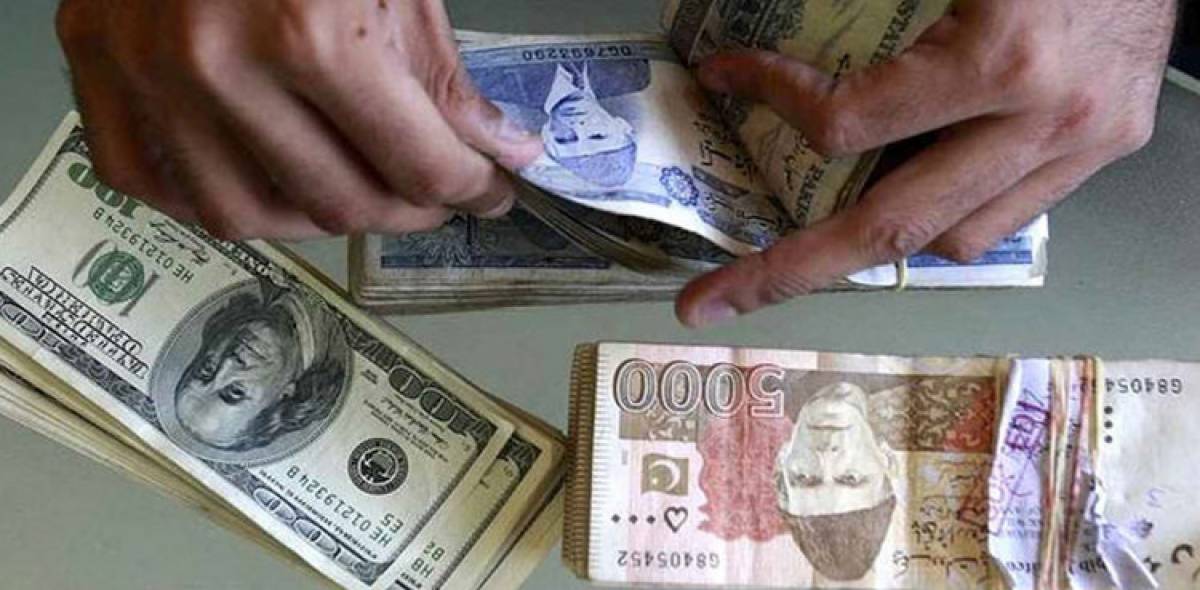By all accounts, the next three to four months are going to be tough for the Pakistani economy in general and the consumers in particular owing to several independent but interlocking developments likely to further boost price-hike, weaken the rupee, and exacerbate the balance of trade and current account deficit.
In first three months of the ongoing financial year, July-Sept FY22, the country saw a fresh spike in consumer prices, a further slide in the value of the rupee, and broadening trade and current account deficits. Although the Pakistan government has imposed additional regulatory duty on the import of more than 110 items, the desired results may not be achieved before January 2022.
It is because the import orders are normally placed two to four months in advance for their timely delivery. To arrest the trend of rising imports will therefore be next to impossible over the next two or three months.
For example, the latest foreign trade data of Pakistan Bureau of Statistics (PBS) showed that the country’s trade deficit for the first quarter of FY2021-22 (July-September) had expanded by 100 percent, mounting to USD 11.66 billion as against USD 5.81 billion for the corresponding period of fiscal year 2020-21.
During July-Sept FY22, exports stood at USD 6.96 billion against USD 5.47 billion last year, showing an encouraging 27 percent growth while imports surged 65 percent, racing to USD 18.63 billion. In the corresponding period of last financial year, the national imports stood at USD 11.286 billion.
An encouraging development in September 2021 is that the monthly exports of Pakistan have surged to USD 2.38 billion, up 26.1 percent from USD 1.887 billion in the corresponding period last fiscal. Nonetheless, imports demonstrated a 50.7 percent growth, expanding to USD 6.48 billion in September 2021, up from USD 4.3 billion in September 2020.
However, a disturbing trend in Sept-2021 is that the national trade deficit has widened by 70 percent on a month-on-month basis, reaching USD 4.1 billion as against USD 2.41 billion in the corresponding period last fiscal.
Another foreign trade unexpected develop- ment has been that average monthly imports of Pakistan are over and above USD 6 billion, which indicate that in 2021-22, the country’s overall import bills will mount to around USD 65-USD 68 billion.
In view of the prevailing external trade trends, Pakistan’s trade deficit for FY 2021-22 is expected to clock in at about USD 36 billion, up 16 percent form last fiscal’s USD 31 billion. This large deficit would certainly aggravate the current account deficit, already at USD 2.2 billion in first two months of this fiscal.
At the end of 2021-22, despite several measures taken by the government to slow down imports, the current account deficit is being projected well above USD 10 billion, a development that would put pressure on rupee value and drain the foreign exchange reserves of Pakistan.
To overcome unwanted burden of the rising import bill, the government must evaluate national imports every month and devise a strategy to reduce non-essential imports. Otherwise, the yawning trade deficit would continue to worsen current account balance, erode the rupee, burn through the foreign exchange reserves, and encourage dollarization and flight of capital.
Importantly, the current account deficit in the first two months of FY22 expanded to USD 2.2 billion, up from USD 800 million in the corresponding months last fiscal. Resultantly, the rupee value is under constant pressure and dollar is rising again. It had already crossed 171 rupees in October 2021 amid speculation of further deterioration in value of rupee in the weeks ahead.
Fitch on dollar-rupee parity
In financial year 2020-21, the international rating agency first predicted dollar-rupee average exchange rate round 165 rupees in Pakistan during the fiscal year 2021-22. Nevertheless, seeing abrupt deterioration in the value of rupee amid widening trade and current account imbalance, record imports, and inflating international prices of oil, gas, and other essential consumer items, Finch has downgraded average dollar-rupee exchange rate to around 180 rupees during the ongoing financial year.
However, experts and analysts in Pakistan differ with the prediction of Fitch and they believe that dollar-rupee parity would approach 200 rupees within 2021-22.
Remittances and trade imbalance
In first three months of the current fiscal year (July-Sept 2021), overseas Pakistanis contributed around USD 8 billion in home remittances. In September 2021, the national remittances depicted a meagre growth of 0.5 percent from the corresponding month of 2020.
However, with USD 2.7 billion of inflows during September 2021, workers’ remittances reflected a strong momentum, remaining above USD 2.5 billion since June 2020.
According to State Bank of Pakistan, October 2021 is the 7th consecutive month when inflows of remittances were recorded around USD 2.7 billion on average. In terms
of growth, remittances increased by 0.5 percent on month-on-month comparison.
Cumulatively, at USD 8.0 billion, remittances grew by 12.5 percent during the first quarter of this year over the same period last year. Remittance inflows during September 2021 were mainly sourced from Saudi Arabia (USD 691 million), United Arab Emirates (USD 502 million), United Kingdom (USD 370 million) and the United States (USD 245 million).
Proactive policy measures by the Government and SBP to incentivize the use of formal channels, curtailed cross�border travel in the face of Covid�19, altruistic transfers to Pakistan amid the pandemic, and orderly foreign exchange market conditions have positively contributed towards the sustained improvement in remittance inflows since last year.
Importantly, Pakistan has sustained USD 11.8 billion dollars trade deficit in first three months of the ongoing fiscal year and this trade imbalance has, technically, wiped out the impact of inflows of remittances during this period.
This wide trade gap would further magnify the current account deficit for the first quarter. The initial data for the first quarter is expected to be available around 20th of October, 2021, five days after the printing of this magazine.
Dwindling forex reserves
After touching record high level of USD 20.7 billion foreign exchange reserves of State Bank of Pakistan in last week of August 2021, the reserves are steadily declining because of the above-mentioned developments. In the first week of Oct 2021, the State Bank’s reserves have dropped below USD 20 billion and this scenario is expected to prevail further that would weaken the quantum of reserves and value of rupee vis-à-vis dollar and other major currencies.
Spike in oil prices
In recent months, the international crude oil prices have escalated as the world has started opening its borders and airports and lifted lockdowns, leading to increase in consumption of oil and gas. The same trend is prevailing for other essential consumer items such as gas, edible oil, sugar, wheat, coffee.
At present, OPEC crude oil prices per barrel are around USD 78 as against USD 58-60/barrel two months ago, with analysts predicting further increase in oil prices in the weeks ahead.
Analysts, in fact, have also forewarned the consumers of a spike in crude oil price to around USD 90 a barrel by December 2021 because of growing consumption. This means the prices of consumer items will further soar in 2021.
All in all, the people of Pakistan who are already complaining of tough times are about to see tougher times.










